Celery finally finds its place in the spotlight with this recipe for crisp, slightly spicy Japanese Quick Pickled Celery.
It’s hard to make celery taste good. It’s boring. And stringy. I mean, it literally has like five calories. I don’t know about you, but I usually feel like the more calories something has, the better it tastes.
Asazuke transforms celery into something you’ll actually want to eat.
By gently peeling the outside of the celery, you’ll remove its stringy texture. And by massaging and soaking the celery in a mixture of vinegar, dashi, salt, sugar and chili, you’ll add a surprising complexity of acid-salt-sweet-umami-and-spicy.
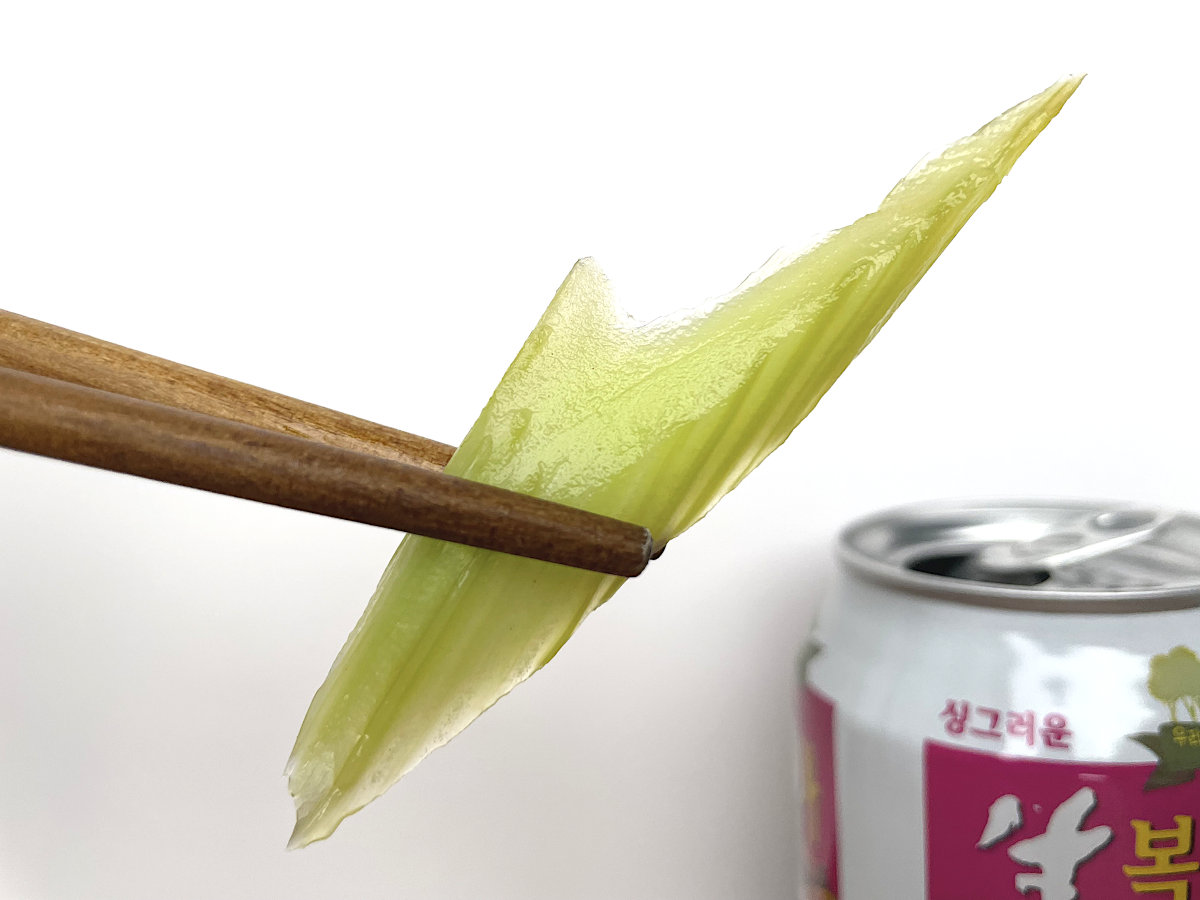

What is Japanese Quick Pickled Celery (Asazuke)?
This pickle is a type of Asazuke, which is a Japanese method of quickly pickling vegetables.
All different types of vegetables can get the quick pickle treatment. Cucumbers, cabbage, and daikon are popular asazuke pickles. Celery is a bit less popular, but works so well as an asazuke since it has a super crunchy texture that’s fun to eat.
How to make Japanese Quick Pickled Celery
This recipe is so quick and takes just 10 minutes of active time, plus 30 more to rest.
Peel and chop the celery. Use a vegetable peeler to gently peel the outer layer of the celery stalk. This step is crucial as it removes the stringiness from your final pickle. Then chop the celery into bite-sized pieces on a bias and at a steep angle.
Mix the celery with the pickling agents. Add the celery to a ziploc bag along with the vinegar, salt, sugar, dashi powder, and chili.
Massage the celery. Once in the bag, use your hands to give the celery a good massage. Do this for about 5 minutes. The massaging process helps the liquid seep deep down into the celery.
Rest the celery. Put the bag of celery in the fridge and let them sit for around 30 minutes. If you’re really in a hurry to eat, you can let them sit for just ten minutes.

Three tips for making Japanese Quick Pickled Celery (Asazuke)
- Peel your celery. Peeling the outer layer of the celery with a vegetable peeler is a crucial step that removes the stringiness from your final pickle. You’ll end up with a super crisp, super crunchy pickle that’s easy to bite through.
- Cut the celery on a bias at a steep angle. Cutting the celery on a bias not only looks great, it also helps more of the pickling liquid seep into the celery. The more of the inside of the celery that you’re exposing to the liquid, the more flavorful your pickle will be.
- Massage the celery with the pickling agents. Once you’ve got the celery and pickling liquid in a ziploc bag, give them a real good massage. A five minute massage will drastically heighten the flavor of the final pickle.
Ingredients
Celery. Crisp celery becomes the canvas for acidic, sweet, salty, spicy flavors from the pickling liquid.
Rice vinegar. Bright, acidic rice vinegar shines through, providing the most prominent flavor of this pickle.
Salt & Sugar. Using both salt and sugar add layers of complexity.
Dashi powder. Dashi powder adds depth and umami to the pickle. Asazuke often uses kombu, but this recipe keeps it simple and uses the instant dashi powder.
Dried chili. Chili brings a subtle spiciness and fruitiness to the dish. Don’t skip the chili as it really ties everything together. Any kind of small, spicy chili works in this recipe.
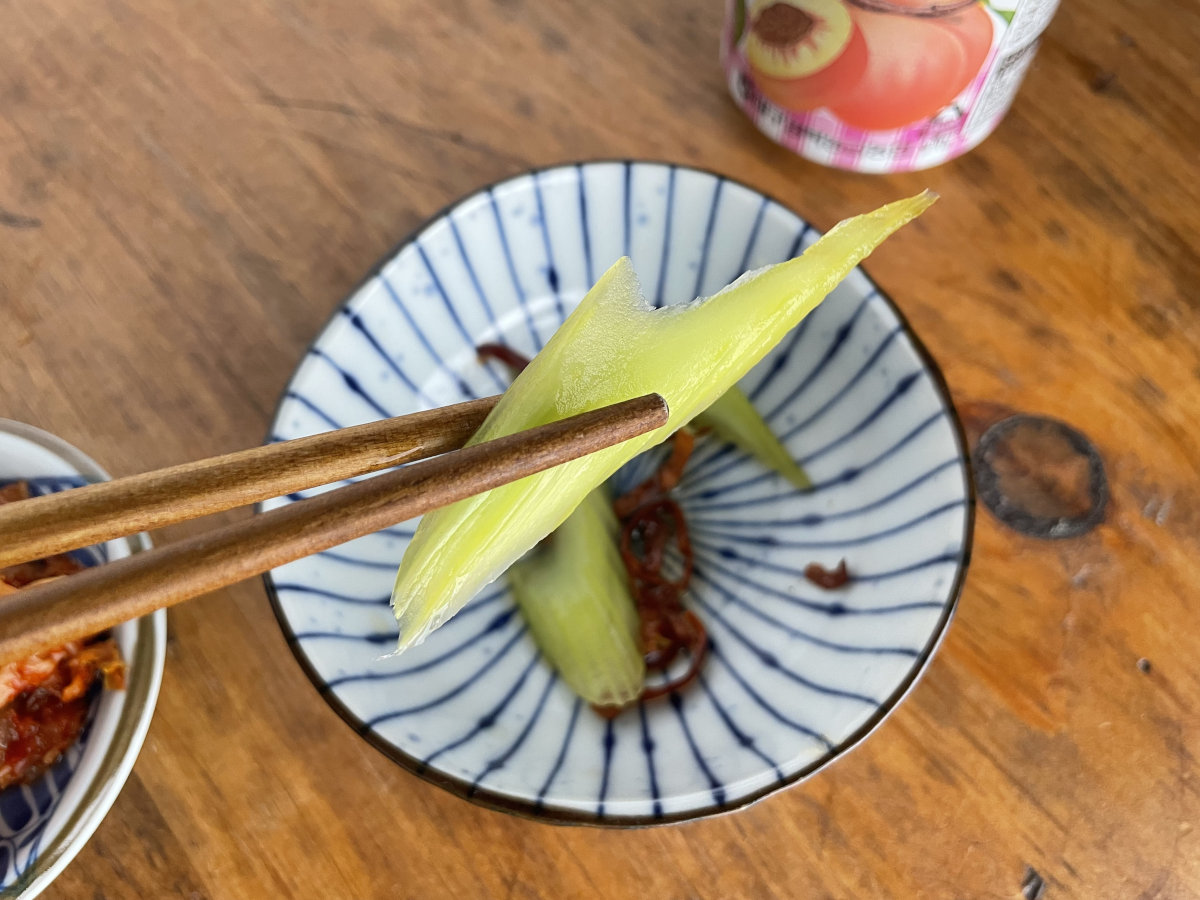

What kind of chili pepper do I need?
Asazuke are a quick, casual way to eat pickles. So you don’t need to worry too much about the kind of chili pepper you use.
In this recipe, I’m using a dried facing-heaven chili from Sichuan. I like this type of pepper since it has a super fruity taste that adds another note of je-ne-sais-quois.
But you can use any small, spicy dried chili from Japan, China, Korea or even Mexico or India.
How long do these pickles last?
Asazuke are best eaten fresh.
But you can store these pickles in the fridge for 2-3 days. The texture will change over time, but they’ll still be tasty.
How to serve Japanese Quick Pickled Celery
Pickles are such a quick way to up your cooking game and make your meals feel special.
Throw these down next to something spicy, like Mapo Tofu, or something rich, like Sushi Bake, and you’ll love how these pickles add a sharp freshness to your meal.
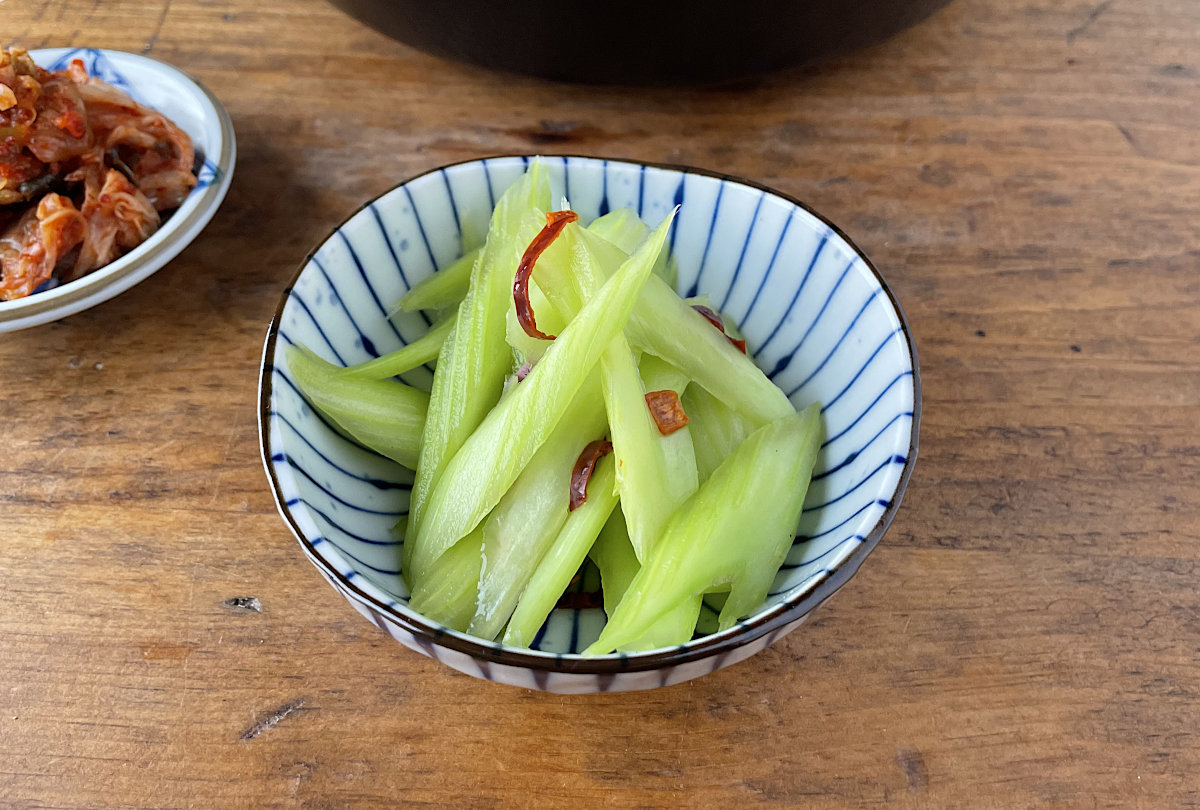
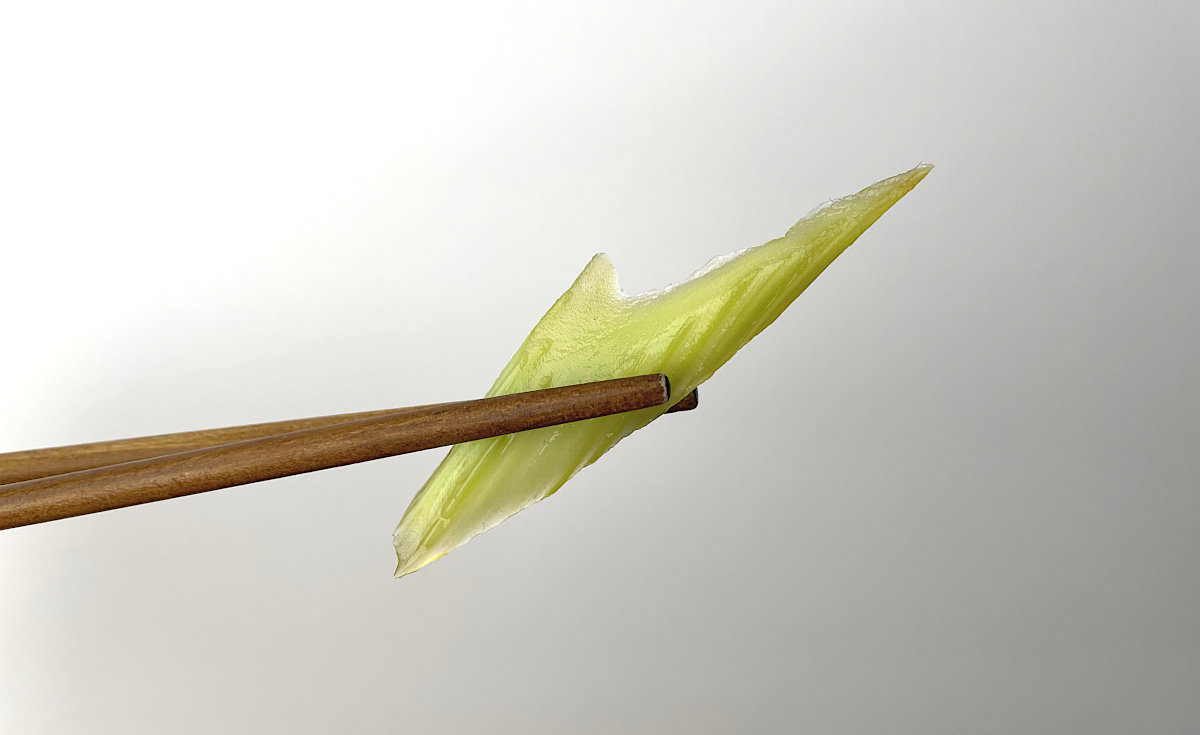
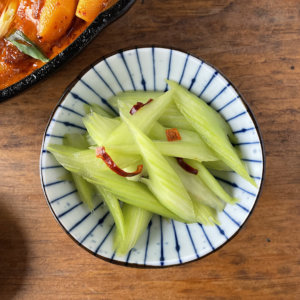
Japanese Quick Pickled Celery (Asazuke)
Ingredients
- 3 stalks celery
- 1 tbsp rice vinegar
- 1/2 tsp salt
- 1/2 tsp sugar
- 1/2 tsp dashi powder
- 1 small, spicy dried chili sliced into thin rounds
Instructions
Peel and chop the celery
- Use a vegetable peeler to gently peel the outer layer of the celery stalk. This step is crucial as it removes the stringiness from your final pickle.
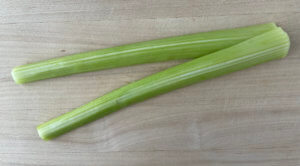
- Then chop the celery into bite-sized pieces on a bias and at a steep angle.
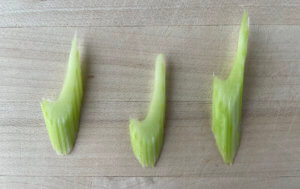
Mix the celery with the pickling agents
- Add the celery to a ziploc bag along with the vinegar, salt, sugar, dashi powder, and sliced chili.
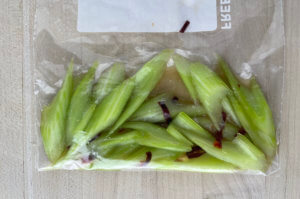
- Once in the bag, use your hands to give the celery a good massage. Do this for about 5 minutes. The massaging process helps the liquid seep deep down into the celery.
Rest the celery
- Put the bag of celery in the fridge and let them rest for around 30 minutes. If you’re really in a hurry to eat, you can let them sit for just 10 minutes.

[…] A crisp, acidic pickle, like this Quick Pickled Celery, provides much needed freshness between bites of creamy, spicy rice […]